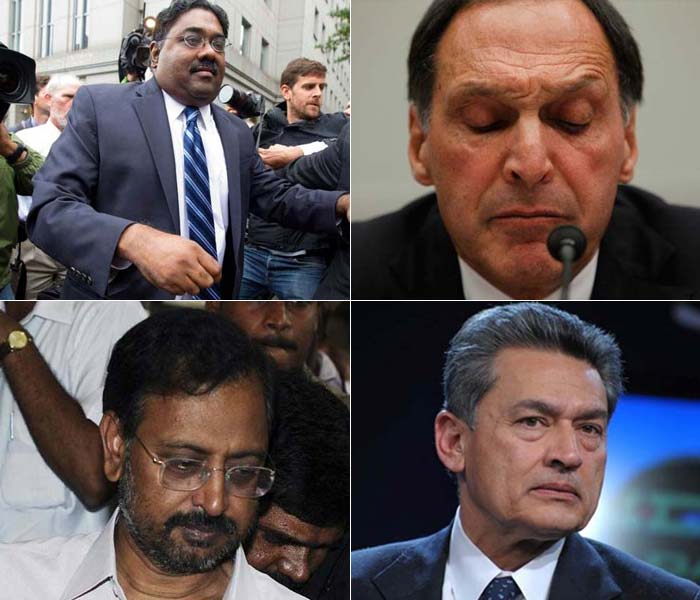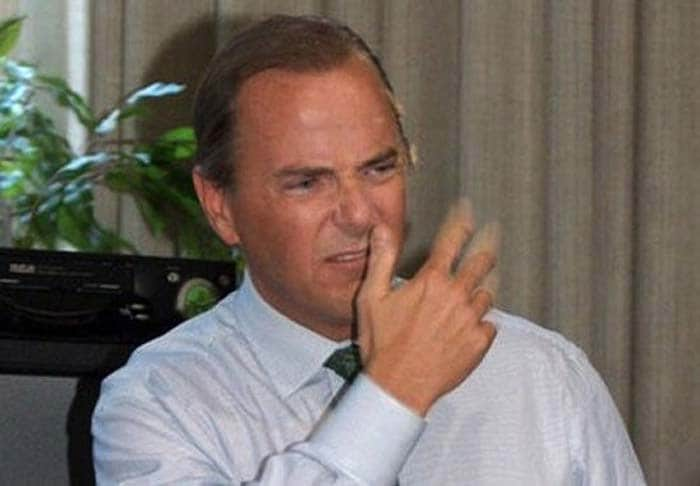Retracing corporate biggies from their meteoric highs to steepest falls
They are the titans who tumbled –a moment of greed here and a second of weakness or vanity there, and unsuspecting investors and the rest of the world looked on in horror as these seemingly indefatigable corporate czars came crashing, sometimes bringing down the colossal companies they helped shape and nurture in the first place. Close on the heels of the sentencing of Rajat Gupta, the former CEO of McKinsey and former director at Goldman, we retrace the fall of some of the most powerful corporate figures the world over.
-
They are the titans who tumbled –a moment of greed here and a second of weakness or vanity there, and unsuspecting investors and the rest of the world looked on in horror as these seemingly indefatigable corporate czars came crashing, sometimes bringing down the colossal companies they helped shape and nurture in the first place. Close on the heels of the sentencing of Rajat Gupta, the former CEO of McKinsey and former director at Goldman, we retrace the fall of some of the most powerful corporate figures the world over.
-
Rajat Gupta
Born in Kolkata on December 2, 1948, Gupta's meteoric climb in the global corporate echelons was unheard of. He broke through racial glass ceilings in a way that no other Indian and few people of color had done before.
Armed with a degree from Harvard Business School and of the prestigious Indian Institute of Technology, Delhi, before that, he started at McKinsey and went on to become the managing director there. Upon retiring from McKinsey, in 2007, after nine years as its managing director, Mr Gupta was a sought after figure on corporate and non-profit boards, and joined those of Goldman Sachs, Procter & Gamble, American Airlines, and Harvard Business School.
Mr Gupta's fall from grace began in April 2010, as part of the investigation into Raj Rajaratnam, a Sri Lankan hedge fund manager accused of insider trading. The US government accused Mr Gupta of tipping off Mr Rajaratnam of Warren Buffet's decision to invest $5 billion in Goldman Sachs.
The man, who has friends in Bill Clinton and Kofi Annan, was found guilty of securities fraud on June 15, 2012. On October 24, he was sentenced to two years in prison and fine $5 million by a US district court in Manhattan for leaking boardroom secrets to the hedge fund manager. -
Raj Rajaratnam
The Sri Lankan former hedge fund manager and founder of the hedge fund management firm Galleon Group was the richest Sri Lankan-born individual in the world in 2009 and the 236th richest American with a net worth of $1.8 billion, according to Forbes.
In October 2009, the self-made billionaire was arrested on allegations of insider trading, post which Galleon closed. In May 2011, he was found guilty on all 14 counts of conspiracy and securities fraud and was subsequently sentenced to 11 years in prison in October 2011. He was also fined a total penalty close to $150 million. -
Ramalinga Raju
Once the beacon of India's infotech outsourcing services industry along with Wipro's Azim Premji and Infosys' N.R. Naryana Murthy, Satyam founder B. Ramalinga Raju shocked the country with accounting fraud. At Rs 14,000 crore, India's Central Bureau of Investigation has termed it one of the country's largest corporate scams.
In January 2009, the management graduate from Ohio University confessed to overstating the company's profits and falsifying assets.
Ramalinga Raju was arrested in 2009 and spent nearly two years in jail in Hyderabad before being granted bail by the Supreme Court in November 2011. He has been charged with criminal conspiracy, cheating, forgery and falsification of accounts.
After his arrest, Satyam was sold to Tech Mahindra, majority-owned by auto maker Mahindra and Mahindra and part-owned by British telecom firm BT, in an auction. It was subsequently renamed Mahindra Satyam. -
Jeffrey Skilling
Enron, a Texas-based energy firm with more than $100 billion in revenue and named as America's most innovative company by Fortune magazine for six years in a row, is now remembered as the country's symbol of accounting fraud. Led by Jeffery Skilling, the company hid billions in debt from failed deals and projects by way of accounting loopholes, special purpose entities, and poor financial reporting. It was the largest bankruptcy reorganization in the American history in 2001, prior to that of Lehman Brothers, and led to the dissolution of one of the largest audit firms – Arthur Andersen.
A graduate from the Harvard Business School, Mr Skilling quickly rose through the corporate ladder to become the one of the youngest partners in the history of McKinsey. In February 2001, Skilling was named CEO of Enron, and received a salary package of $132 million a year.
However, post Enron's bankruptcy, Mr Skilling was convicted in 2006 of multiple federal felony charges of conspiracy, insider trading, securities fraud and making false statements to auditors relating to the company's financial collapse. He is currently serving a 24-year, four-month prison sentence in Colorado and is scheduled for release in February 2028. -
Dennis Kozlowski
Close on the heels of Enron, another scandal rocked the industry. The-then chiefs of Swiss security systems company Tyco International were accused of theft of more than $150 million from the company.
Former chairman and chief executive Dennis Kozlowski and former chief financial officer Mark H. Swartz were each sentenced to 25 years in prison.
After joining in 1975, Mr Kozlowski, born in New Jersey, took over Tyco in 1992, during which time the company expanded significantly and regularly beat Wall Street expectations. He left Tyco in 2002, surrounded by a controversy over his pay package, which he himself testified to be “confusing” and “almost embarrassingly big”.
Mr Kozlowski was finally convicted after a dramatic trial and retrial in 2005 for receiving $81 million in unauthorized bonuses, buying art worth $14.725 million and paying former Tyco director Frank Walsh $20 million as investment banking fee from Tyco's accounts. -
Richard S. Fuld, Jr.
In 2008, another bank overtook Enron's record as the biggest bankruptcy filing that jolted the whole world – the Lehman Brothers, then-led by Richard Severin Fuld, Jr.
Nicknamed ‘Gorilla' on the Wall Street for his aggressive competitiveness, he started his career with Lehman Brothers in 1969 as a commercial paper trader. Over the next 40 years, he rose up to the position of chairman and CEO of the bank until its collapse in 2008. In 2006, he was named America's top chief executive in the private sector by Institutional Investor magazine. He was also ranked as the Worst American CEO of All Time by Condé Nast Portfolio.
Richard S. Fuld, Jr. was blamed to have underestimated the downturn in the US housing market leading to a negative effect on Lehman's mortgage bond underwriting business.








